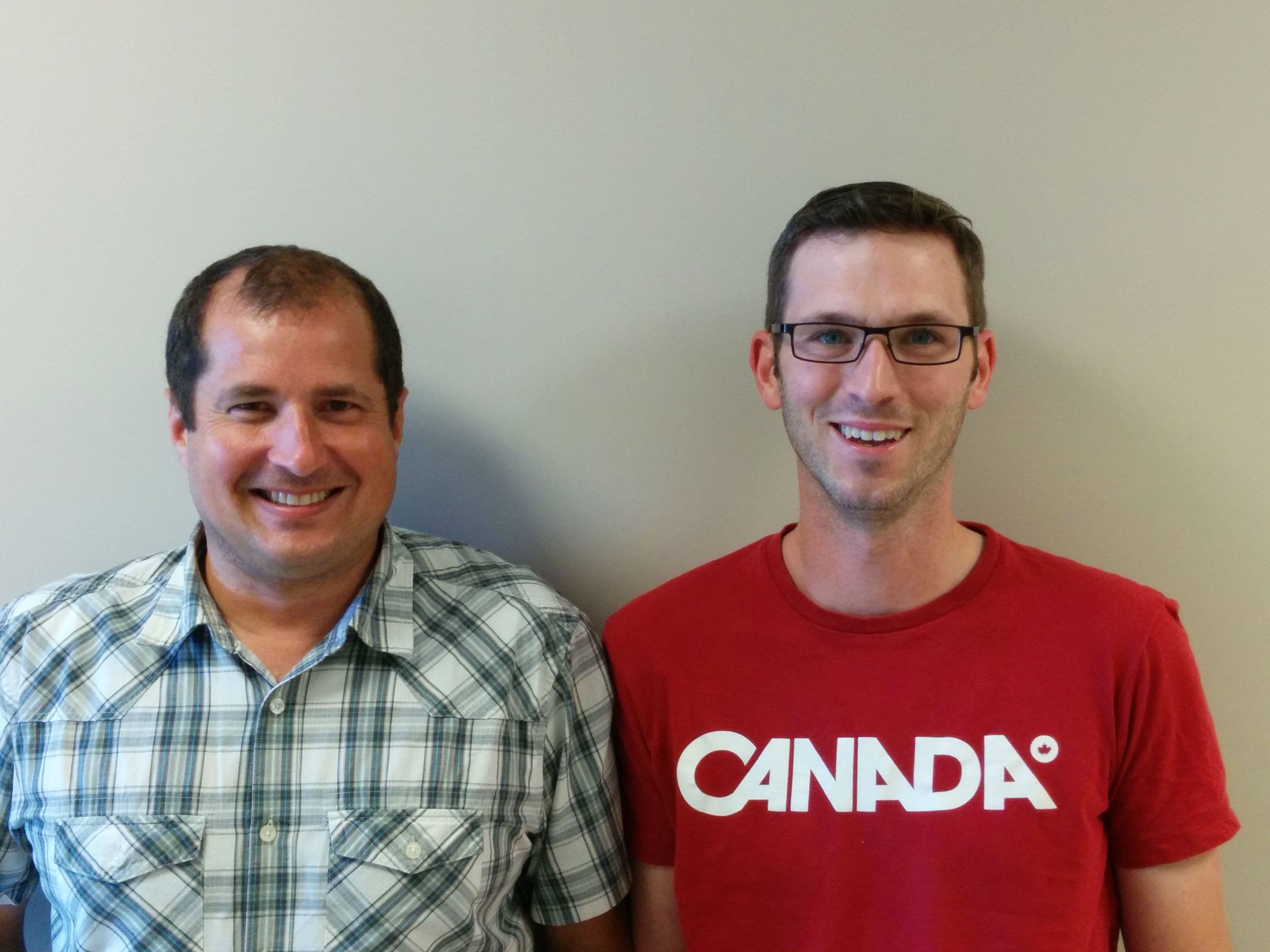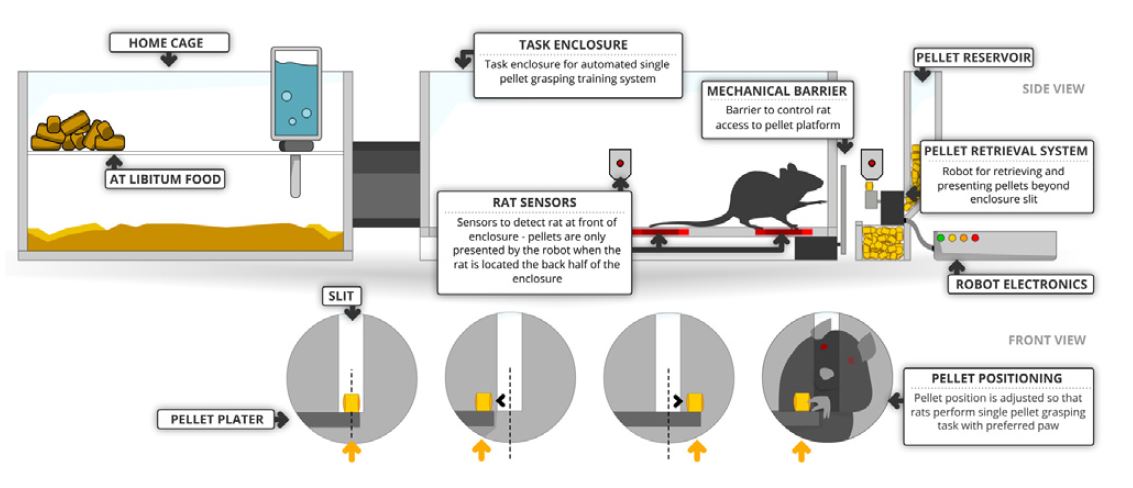
Researchers Karim Fouad (left) and Keith Fenrich (right)
(Edmonton) For someone with a spinal cord injury (SCI) or who has suffered a stroke, the simple task of reaching for an apple or opening a door can be very difficult.
Karim Fouad, physical therapy professor at the Faculty of Rehabilitation Medicine and director of operations and basic research of the Neuroscience and Mental Health Institute, and Keith Fenrich, a post-doctoral fellow and member of Fouad's research team at the University of Alberta, recently received $50,000 from Conquer Paralysis Now to explore a rehabilitation robot in hopes of developing new rehabilitative therapies for SCI patients.
"SCI can damage areas of the spinal cord that are responsible for all kinds of motor functions and rehabilitative training is currently one of the most successful ways to recover motor function. However, the design of such therapies is surprisingly underexplored," explains Fouad. "Our goal with this robot is to address questions in animal models that cannot be easily answered in patients like, 'How much rehab training is enough?' and 'How does training interact with drug treatments?'"
Conquer Paralysis Now is a non-profit foundation with a mission to cure paralysis through SCI research and treatment. The rehab robot study received the Michael Fux Foundation Reaching & Grasping award, which recognizes projects that drive progress towards restoring reaching and grasping function for human SCI patients.
"Currently individuals with SCI get rehabilitation therapy as part of their treatment plan, but we still have not explored the limits of rehabilitative training," says Fenrich. "With our robot, we can address questions in animal models more quickly and efficiently than we could using standard animal training techniques."
Rehabilitation therapy is the most common therapeutic approach in the clinic. As part of a rehab training program, patients with SCIs that affect arm and hand function will undergo a series of treatments and exercises that allows them to regain movement in their arms, hands, and fingers. For example, squeezing a gripper ball to improve grip strength or moving blocks from one side of a table to the other to train manual dexterity.
"Our robot works in a similar fashion," says Fenrich. "Instead of tracking the ability of a patient to reach and grasp a block, the robot presents tasty food pellets to rats and automatically tracks how often the animal can get the food pellet versus when they miss the pellet."
Because rehab training in animals is quite difficult and time consuming, Fouad and Fenrich developed an automated robotic system for training and testing animals to perform reaching and grasping tasks. Their robotic system dramatically reduces the amount of researcher time required to train and test the animals and reduces variability of the results.
"The efficiency of the robot can allow one researcher to collect data for several studies simultaneously in the same amount of time it would have taken to do just one study using manual training techniques," says Fenrich. "This really improves our ability to test new ideas quickly and accelerates the rate of success."
The findings of these studies can then be applied to treatment plans that could improve patient recovery results.
"Rehabilitation is like practicing for a sport. The more you train, the better you will get," says Fenrich. "The difference is the goal of rehab is not to become an elite athlete. Instead, the training designed is to regain a basic function in tasks of daily living, and the only way to do this is to repeat a task like turning a doorknob over and over again."
"Animal models set the foundation for various rehab training approaches," says Fouad. "Showing clinicians that there are ways to improve rehab training can also lead to changes in health policies that could provide better funding and treatment guidelines for individuals with SCI."
___________________________________________________________
The Faculty of Rehabilitation Medicine at the University of Alberta
As the only free-standing faculty of rehabilitation medicine in North America, the Faculty of Rehabilitation Medicine's vision is to be at the forefront of knowledge generation and scholarship in rehabilitation. Through excellent teaching, research and service to the community, the Faculty is committed to enhancing quality of life, promoting participation and autonomy, and improving function for citizens in Alberta and beyond.
A research leader in musculoskeletal health, spinal cord injuries, common spinal disorders (back pain), seniors and dementia and speech-language disorders, the Faculty of Rehabilitation Medicine aims to inspire the realization of the full potential of individuals, families and communities. The three departments, Occupational Therapy (OT), Physical Therapy (PT) and Communication Sciences and Disorders (CSD) offer professional entry programs. The Faculty offers thesis-based MSc and PhD programs in Rehabilitation Science, attracting students from a variety of disciplines including OT, PT, SLP, psychology, physical education, medicine and engineering.
